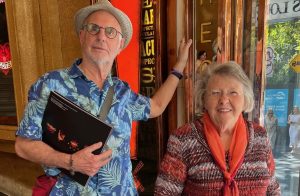Peaceful Pill Blog

Euthanasia for People with Advanced Dementia?
The issue of someone who has advanced dementia getting help to die is a challenging question for most people. At the current time, this is exactly what my, or rather my wife Fiona’s, family is going through. Her mother Pam is in the advanced phase of this terrible disease with ...
Read More
Read More

How Not to Help Your Loved One to Die
This week an Australian woman called Kylie Truswell-Mobbs appeared in court charged with the murder of her husband, David Mobbs. David was suffering from motor neurone disease (MND/ ALS) at the time that Kylie allegedly killed him. Indeed, according to news reports, David was so disabled by the disease that ...
Read More
Read More

The Latest Data from Oregon
Earlier this month the Dutch government published its annual report on the state of voluntary euthanasia in this country which showed continuous growth in people seeking medical help to die. Yet like most places where euthanasia/ assisted suicide is legal, relatively little data is collected on the type of deaths ...
Read More
Read More

Spanish Precedent as 24-Year Old with Paraplegia Allowed to Die
Ramon Sampedro would have been delighted. It has been reported this week that a judge in Barcelona, has authorised the euthanasia of a 24-year-old woman with paraplegia. The woman became a paraplegic in November 2022 after a failed suicide attempt when she suffered serious injuries to her spine. Her request ...
Read More
Read More

PPeH vs AI – who provides the best answers?
AI is changing life (and death) as we know it. Last week, we drew attention to a recent article in MIT Tech Review where, using the Nomi platform, a chatbot was able to help advise on ways to kill yourself. It was perhaps inevitable that AI would start down the ...
Read More
Read More

When your Chatbot Girlfriend Instructs You on Suicide
In an article published this month in the MIT Tech Review, new heights (no pun intended) have been reached in terms of accessing how to die information. The article involves Minnesota writer/ photographer Al Nowatzki who, with his wife’s permission, embarked on a five month relationship with a Chatbot from ...
Read More
Read More

Different Methods, Different Deaths: Hypoxia Explained
January 2025 PPeH Update In January, Exit published a significant new update to the Peaceful Pill eHandbook Essentials. The topic was the different ‘death experiences’ that different methods provide. Indeed, so detailed was the update that important facts were easy to overlook. Nitrogen The section on Nitrogen, for example, gave ...
Read More
Read More

A Good Death will Remain Out of Reach in the UK
A Bit of Background For the past 13 years, the UK has relied on 'the Starmer guidelines' for their legal determinations on assisted suicide. Back in 2010, when he was the director of Public Prosecutions (long before his recent Prime Minister-ship), Keir Starmer attempted to clarify the law around assisted ...
Read More
Read More

Needles, Drinks & Buttons – an Existential Dilemma
In recent weeks, I have watched as the Sarco has neared its completion. This has taken place in a workshop in Rotterdam. I have watched as the electronics guy has trouble-shot (is that a term) his system and made some necessary last minute adjustments. I have watched 'the button' being ...
Read More
Read More

She who sups with the devil …
She who sups with the devil should have a long spoon ... Part of me wants to shake Zoraya and tell her to wake up to herself. She may be depressed, and she may have any number of psychiatric maladies, but that does not mean that she should throw common ...
Read More
Read More
Exit